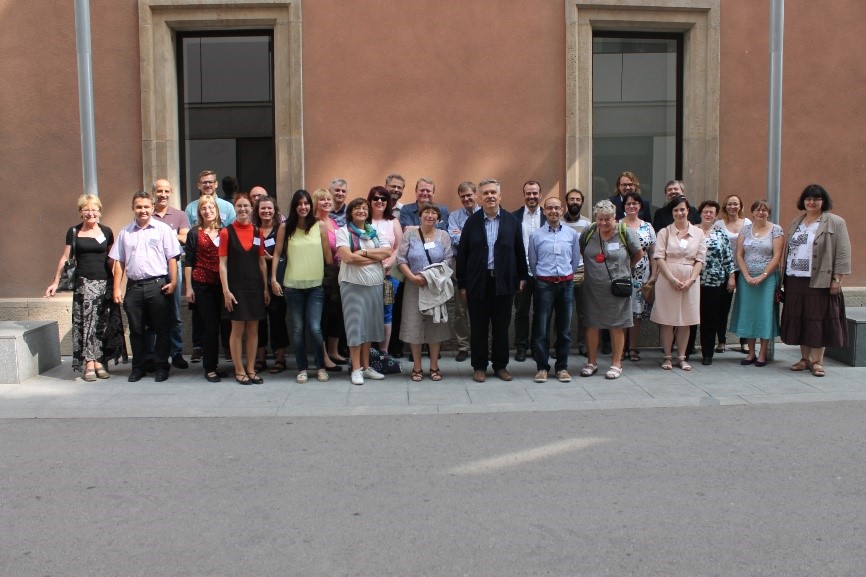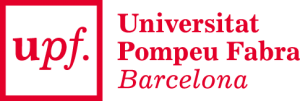European integration as a subject of study in secondary school education in the 28 member states
In this project EuroClio brings together educators from all 28 EU member states to research how European integration is taught in secondary school education across Europe. Most team members were nominated by EuroClio member associations in their respective countries. To improve the way teaching and learning about the European Union is taking place, the project will collect information on the way the European Union is presented in textbooks at the final years of compulsory education across the different educational systems within the EU. The team will identify and research the 2 school books used in history education and the 2 books used in another social science subject that are most widely used to teach about the European Union in their country. This project is the first attempt at measuring what textbooks in Social Sciences across Europe have in common concerning EU-related information.
Cover image: European Union 2012 – European Parliament.
Project Aims
[su_list icon=”icon: caret-right”]
- To introduce more and better knowledge on European integration in order to fully utilize the enormous potential for development and collective and individual transformation that this entails.
- To establish the common features and fundamental differences in the teaching of European integration throughout the European Union at the end of compulsory education.
- To make the European and national institutions aware of the quality of the common core and where the major differences lie.
- To accompany the extensive dissemination of results with specific proposals to improve and expand the shared base.
- To initiate a process of reflection on the role that education on European integration plays in the lack of internal cohesion within the EU.
- To provide a response to the wishes expressed by the institutions of the European Union to improve teaching on European integration in the various different European education systems as a way to increase social cohesion within the Union.
- To nourish the great European debate on how to articulate identification with the European project for a shared future.

All team members at the first Meeting in Barcelona, 25-27 September 2015.
Results
The main outcome of this project is a comparative research report that encompasses analysis of 4 textbooks of each of the 28 EU member states, and specifically looks into fundamental commonalities and differences in European teaching about the European Union at the final years of compulsory education. This report is laying the foundation for establishing a roadmap for the institutional action to be taken in this field.
Publications
 Hartmann, H., Montlahuc, J., Rogozin, A., Stegers, S. (2017). Teaching “Europe” to enhance EU cohesion – Research Report – This research report brings together the project’s analysis of how ‘Europe’ and the European Union are taught in the 28 EU member States. The term ‘Europe’ in reality is used to denote a European dimension which often goes beyond the European Union stricto senso. It therefore follows that the European dimension in education has two main strands. First, there is the inclusion of a European dimension in all the relevant subjects. Second, there is specific teaching on the European Union, its historical origins and process of formation, its political economic foundations, its values, its institutions, how these work and their impact on everyday life of European citizens. ‘Europe’ and the EU are presented differently in the public education systems in each country in the European Union. The data generated by this analysis has been processed, clustered, and visualised by the EuroClio team. The condensed research presented in this research report and its preliminary conclusions aim to contribute to raising awareness on the importance of history education for young people and societies of the European Union as a whole (Click image to download .pdf).
Hartmann, H., Montlahuc, J., Rogozin, A., Stegers, S. (2017). Teaching “Europe” to enhance EU cohesion – Research Report – This research report brings together the project’s analysis of how ‘Europe’ and the European Union are taught in the 28 EU member States. The term ‘Europe’ in reality is used to denote a European dimension which often goes beyond the European Union stricto senso. It therefore follows that the European dimension in education has two main strands. First, there is the inclusion of a European dimension in all the relevant subjects. Second, there is specific teaching on the European Union, its historical origins and process of formation, its political economic foundations, its values, its institutions, how these work and their impact on everyday life of European citizens. ‘Europe’ and the EU are presented differently in the public education systems in each country in the European Union. The data generated by this analysis has been processed, clustered, and visualised by the EuroClio team. The condensed research presented in this research report and its preliminary conclusions aim to contribute to raising awareness on the importance of history education for young people and societies of the European Union as a whole (Click image to download .pdf).

Europe for Schools
Coordinating Partner
Fernando Guirao, Jean Monnet Professor of European Integration History
Contributors
Vadim Oswalt, Barbara Helm, Anais Maes, Bistra Stoimenova, Alev Tugberk, Melina Foris, Eva Zajícová, Martina Kalcikova, Daniel Bernsen, Jess Skjødt Pedersen, Madis Somelar, Luis Hurrillo, Kati Hyonen, Jacqueline Houlgatte, Kostas Therianos, Igor Jovanović, Dea Marić, Ildikó Hegedűs Lutter Andrásné, Derval Ryan, Paolo Sterlicchi, Sonata Džiavečkaitė, Ansis Nudiens, Guido Lessing, Alexander Cutajar, Hellen Janssen, Andrzej Górniak, Miguel Barros, Mihai Manea, Jeanette Wiberg, László Angyal, Mateja Zupančič and Katharine Burn.



